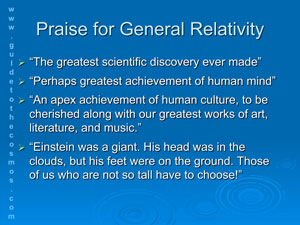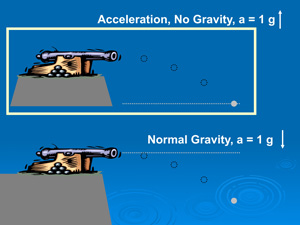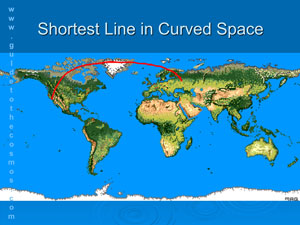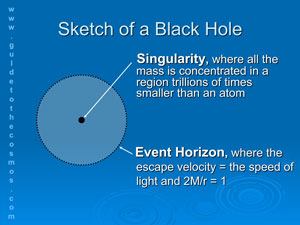|
|
|

|
Many consider Einstein’s General Theory of
Relativity to be one of the greatest achievements of the human mind.
|
|
Einstein
realized that someone in free fall would feel no gravity. This led him
to discover the Equivalence Principal: locally, gravity is equivalent
to a uniform acceleration, which greatly simplifies the mathematics.
|

|
|

|
Einstein
said what we call gravity is really the effect of objects traveling on
the shortest paths through space and time that is “curved” by mass and
energy. These paths don’t look straight to us because we can’t perceive
the true shape of spacetime. The image shows the shortest air route
from Los Angeles to Moscow; it doesn’t look straight because the map
distorts the true shape of Earth’s surface, making it look flat while
it is really curved.
|
| The complex math of General Relativity has only
been solved in a few simple situations. In these, the curvature of
spacetime is determined by a simple expression: 2M/r, where M is the
mass of the gravitational source and r is distance from that source.
The slide tabulates how much time is slowed down by in various cases. |

|
|

|
Black
holes, the most exotic objects in the universe, have just two parts: a
central singularity, where all the mass is concentrated; and a
surrounding event horizon, which is the point of no return. Just as the
horizon on Earth is not a material object but rather the limit of how
far we can see, a black hole’s event horizon separates the universe of
everything we can observe from the black hole’s interior, from which
nothing can ever escape.
|
|
|